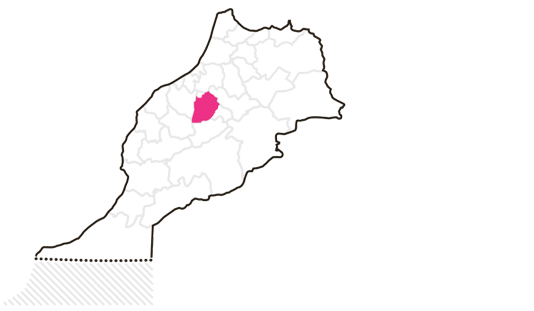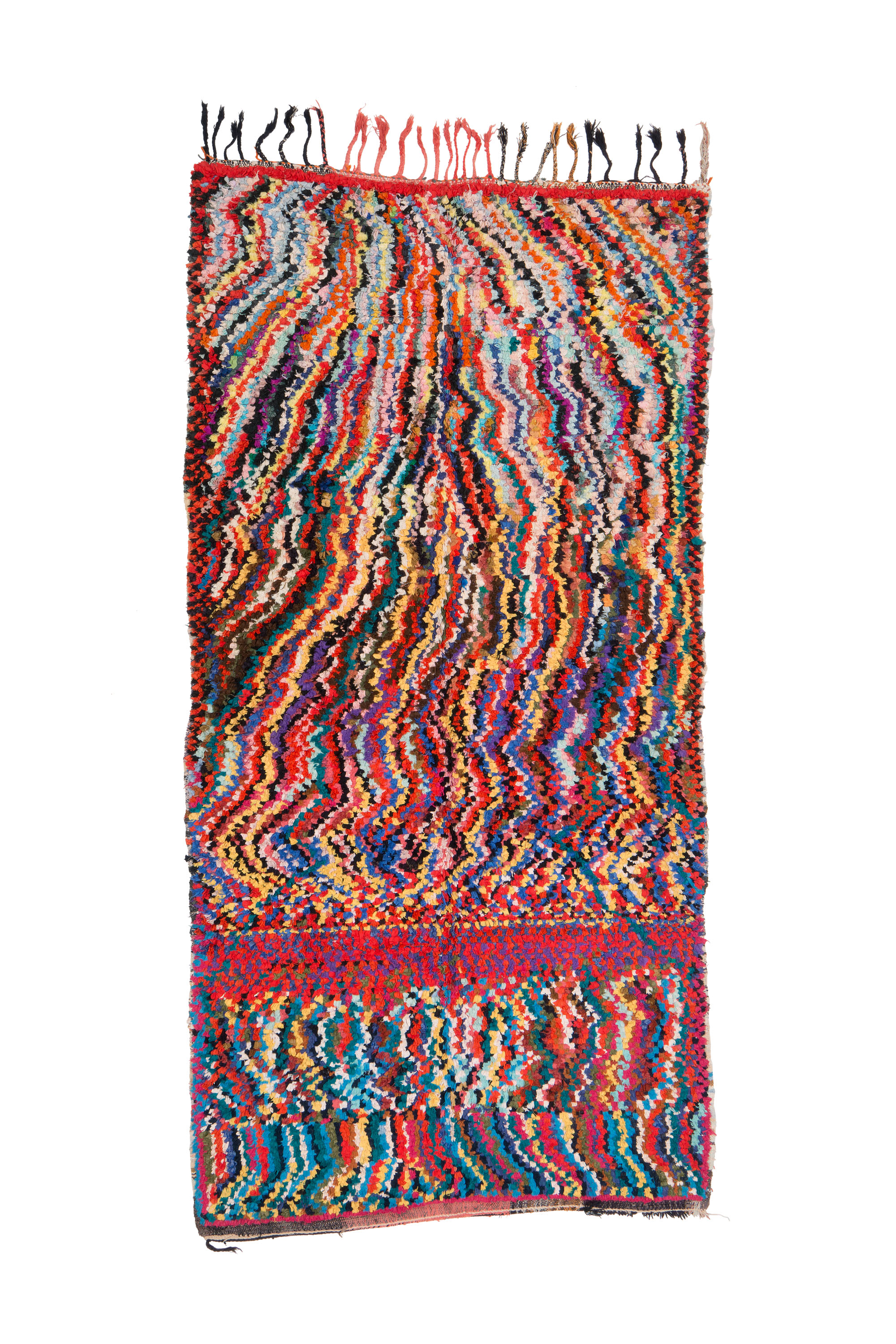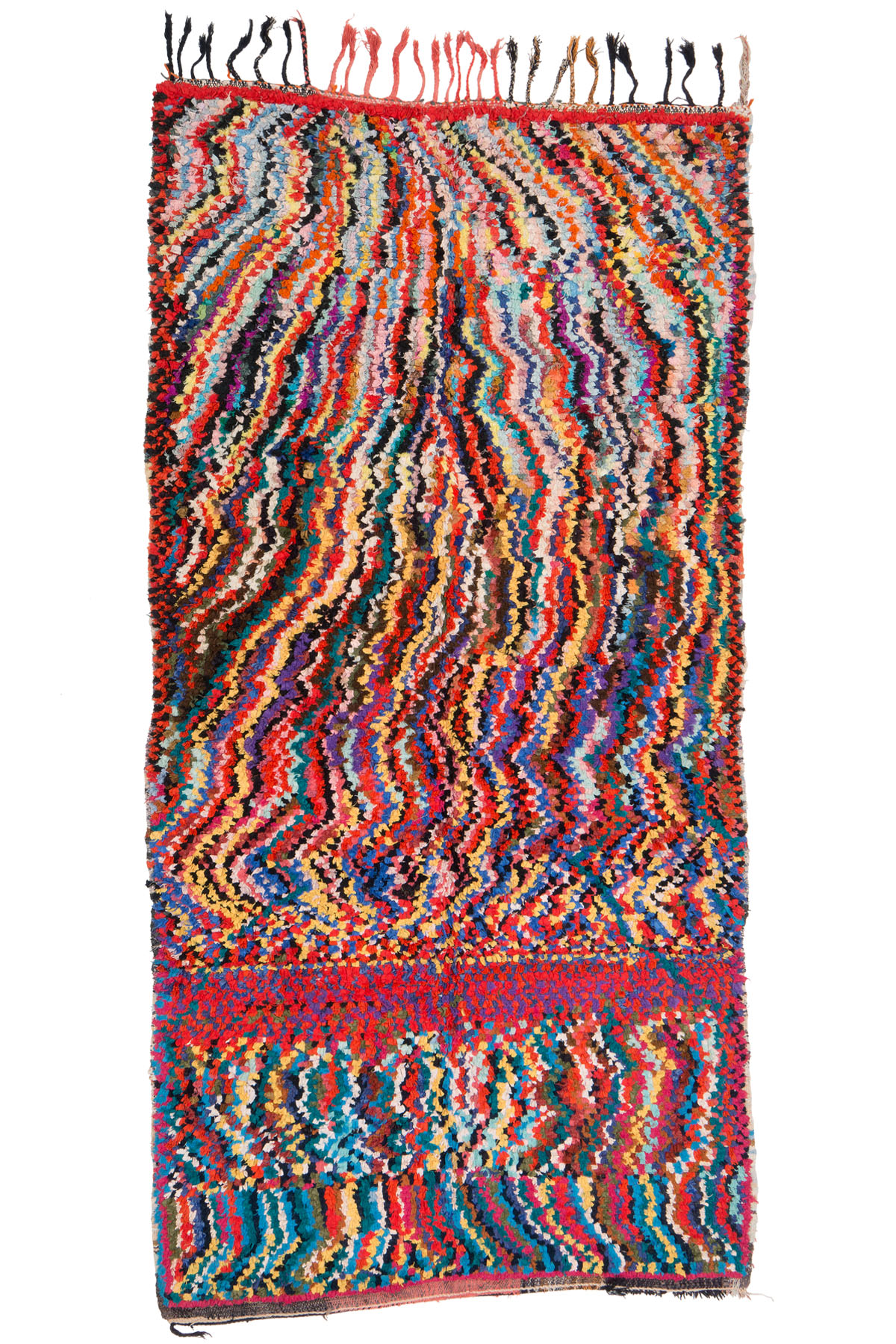BOUCHEROUITE N° 365BS
A highly unique Boucherouite rug, 1990s-2000s, entirely made of recycled textiles with a wild colorful aesthetic. The overall design consists of free flowing lines with a «fluid quality» reminiscent of a flowing river. The textile scraps are generating an interesting texture on the surface and give the carpet more three-dimensionality. The making of upcycled rag boucherouite rugs started in the 1960s-70s in the plains around the towns of Beni Mellal and Boujad and spread to other Berber regions in the 1990s due to the increased decline of nomadic lifestyles and the resulting lack of available wool.
10'5" × 5'

BOUJAD rugs are made by Arab tribes and Arabised Berber tribes but they are named after the town of Boujad. The surrounding region of this town lies in the western foothills of the Middle Atlas adjoining the Zaer tribal territory in the extreme western corner, and the town Beni Mellal at the northernmost edge of Western High Atlas. The knotted rugs have typically a low pile and are often made with mixed materials such as wool, cotton, textile scraps and industrial yarns. Their designs are often highly individual containing Berber motifs, motifs found in Rabat rugs, distorted checkerboard fields and gestural abstract patterns- all in lively colors.

